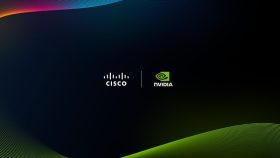Graphiant Launches Edge Networking with “Stateless Core”

The cloud networking market is evolving in interesting ways. We’ve seen the arrival of cloud onramps from the major cloud providers, multicloud networking (MCN) solutions from startups, and even cloud-based network-as-a-service (NaaS). All of these have a central premise in mind: Make software-based networking easier to connect clouds, applications, and enterprise resources.
Graphiant is the latest in a group of notable startups to come out of stealth mode with a high-performance networking solution targeting edge applications. The company today launched its first product, the Graphiant Network Edge, which aims to simplify routing across hybrid networks, minimize the need for firewalls, and provide an economical alternative to multiprotocol label switching (MPLS). The company says that by using the Graphiant Network Edge, companies will be able to cut down on routing complexity, as well as implement routing quality of service (QoS) at scale without high costs.
Essentially, Graphiant functions as a firewall and a cloud-based router at the same time, avoiding the need to encrypt and decrypt packets along the route. It does this by placing the routing control as a core function that runs in the cloud, which can direct programmable devices at the edge of the network – including switches, routers, or even Internet of Things (IoT) devices. Applications and edge devices can be programmed with a tag that give the packets instructions for the routing on the network. The components include the Graphiant Core, the Graphiant Gateway, the Graphiant Edge, and the Graphiant Portal (for management).
The goal is to enable anybody at an organization to quickly set up a secure network that can cross diverse environments and connect any application or device with a software-based network. Graphiant calls this approach a “stateless cloud,” because it can instantly set up network connections that require no prior network data or "state" to carry the data across the network with Graphiant's route-tagging information.
Graphiant Has Viptela and Sequoia Roots
Graphiant is backed by a high-pedigree team of executives and investors. Khalid Raza, Graphiant’s CEO, was a co-founder of software-defined wide-area networking (SD-WAN) pioneer Viptela. He says that the current approach of building encrypted tunnels to connect networks using IP -- often by using IPsec tunnels -- is too complicated and doesn't scale. He believes Graphiant's solution will be more efficient.
“With much more data generated at the edge, you have to think about how these networks are connecting," CEO Raza told me in an introductory briefing. “The IoT piece is the most complex. Existing solutions [for networking], such as tunnel automation, are becoming unsustainable.”
Raza and Graphiant's team join a number of other alumni of Viptela (which was acquired by Cisco in 2017) who are now pursuing the MCN problem. Some of the others include Alkira, which is led by the Khan Brothers, Atif (CTO) and Amir (CEO), formerly of Viptela; and Prosimo, led by CEO and co-founder Ramesh Prabagaran, who led product development at Viptela.
Graphiant will also gain attention because it is funded by Sequoia Capital, Two Bear Capital, and Atlantic Bridge. Sequoia, one of the world’s most successful venture capital firms, has a long history of success in the networking markets, and it made a big mark in the SD-WAN market, where it funded both Viptela and Versa Networks. Both companies went on to become SD-WAN market leaders (Versa is still independent).
MCN Field Is Growing
MCN and hybrid cloud networking seem like a natural progression from SD-WAN. They address a bigger challenge, which means it's probably a bigger market. SD-WAN used software-based control to deploy and manage connections at enterprise branches, but it doesn't go so far as to connect inside of cloud services or to IoT. MCN reaches out and extends the edge to connect to more things -- including any device, application, or network.
Futuriom has already projected MCN to be a much larger market worth tens of billions of dollars, as organizations worldwide look for new ways to connect all of the data, applications, and resources wherever they reside – edge, datacenter, enterprise, or cloud.
Graphiant's entry will add momentum and complexity to the evolving MCN market, which is marked by many different startups and approaches. Existing startups include Alkira, Aviatrix, F5 Networks (via the acquisition of Volterra), and Prosimo -- among others. This is a good sign for the market, as it ratifies the fact that large organizations are looking to solve the MCN and hybrid networking problem. It’s also not a crazy amount of companies – the SD-WAN market in its early days had upward of 50 companies pursuing the market. At least four had high-profile exits.
The differentiation of Graphiant from the others will come down to its specific stateless core routing approach. Graphiant is pitching a new networking architecture for cloud that doesn’t involve spinning up new network tunnels, which are typically constructed using standardized protocols such as IPsec. Graphiant has built a new routing system, with the routing control coming from a Graphiant Core hosted in the cloud, communicating to devices guided by software tags that Graphiant places at the edge with software.
To those who have followed the networking industry for a long time, this is an engineering approach used to prioritize traffic or provide QoS. Some examples in the past include tag or label switching, an approach that found its way into MPLS, which came to market in the 1990s when the major routing vendors developed a standardized way to assign QoS to routed networks using IP technology.
Targeting Cloud Costs and MPLS
Finding a replacement for MPLS targets two of the primary trends that Futuriom has been tracking in the cloud networking and hybrid cloud markets. First, with platforms such as cloud, IoT, and datacenter proliferating, organizations want a more efficient way to set up secure hybrid networks using cloud-based software tools. Second, organizations want to leverage the growth of IP Transit networks and cloud infrastructure as a lower cost alternative to private networking services such as MPLS. Interestingly, this was one of the key drivers that led to the advancements of SD-WAN.
Graphiant is likely to kick up the conversation about how IP routing will evolve with the cloud. MPLS is an aging technology that was developed in the 1990s by the major routing vendors such as Cisco, Nokia, and Juniper to provide standardized, high-performance networks. But MPLS can't be easily configured to operate among hybrid networks or cloud services.
With backing from powerful investors and an experienced engineering staff, Graphiant’s approach now adds more momentum and intrigue to MCN and hybrid cloud networking approaches. It should help grow the market as momentum for more more agile, cloud-friendly networks.
Futuriom's research team has written a sponsored research brief on the Graphiant solution, which you can download here.
























